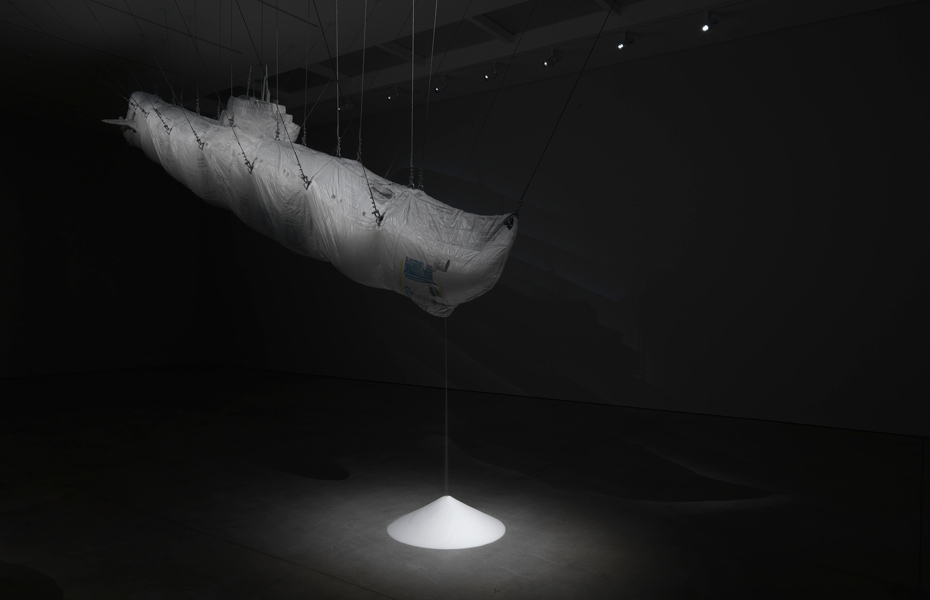The Mexican artist’s third exhibition at White Cube Mason’s Yard is more and less than it appears to be, metaphorically speaking

In literature, a mixed metaphor is something like the aesthetic equivalent of drinking champagne from a tea cup, imaginable, yet, somehow inconceivable. Even from the quills of the greats, such literary peccadilloes can leave readers scratching their heads—think of Hamlet’s promise to “take up arms against a sea of troubles”. Ever try stabbing the sea?
Didn’t think so.
Visual art doesn’t exactly play by the same set of rules though, and perplexedly scratched heads have led to the beginning of more than one great art career.
In Damián Ortega’s show, Traces of gravity at the Mason’s Yard White Cube, the mixed metaphors were flying. Wait, flight in “traces of gravity”? Maybe the metaphor metamorphosis is contagious. Take, for example, rush-hour pile up of reference and metaphor in Ortega’s Congo River which occupies the ground floor gallery at the Cube.
The work consists of a pile of tyres arranged in the centre of the room. Over the tyres, it’s possible to see a thin white line that, upon closer inspection, turns out to be a line of salt. Reading the press release, I was informed that the salt was meant to exist
in unresolved tension, referencing both lines on a map and lines of cocaine. It’s funny how sometimes explaining something can make it less clear. If I’d been told the tyre pile was called Congo River and left to my own devices, I would have assumed the line was a representation of the river itself rolling over the landscape of the Democratic Republic of Congo.
Composing the landscape of tyres would almost certainly evoke the colonial history of the Congo, the great rubber exporter of the late 19th and early 20th Century—a time when rubber was to the global economy something like what oil is today.
“Some who will see the politics as a bit heavy-handed, but it could just as easily be seen as a very deadpan form of satire”
There is certainly a metaphoric coherence when one considers the violence that went into the rubber extraction in the Congo—where sometimes whole villages suffered hand amputations for not meeting rubber quotas for their Belgian masters—and the contemporary drugs trade. Still, though, it’s a work that seems to prefer less explanation rather than more, and so I leave it to the reader’s discretion to pursue matters further.
In the downstairs gallery, Traces of gravity seemed to come full circle. The instability of Congo River seemed to resolve itself in the work Hollow/stuffed market law.
The piece consists of a massive sculpture of a submarine suspended from the ceiling. The sculpture is made from industrial food sacks and slowly leaks a steady stream of salt into a pile on the floor. There are some who will see the politics of the piece as a bit heavy-handed, but it could just as easily be seen as a very deadpan form of satire — “traces of comedy”, if you like.
Looked at from one perspective, the leaking submarine, with its continued evocations of warfare and the drugs trade, exists as a kind of ruined hour glass; you don’t see time passing so much as time running out.
Thus, the false hope of the hour-glass is revealed for what it is: a dangerous illusion. Hollow/stuffed market law is a real highlight whatever its difficulties—it’s best not to even begin trying to untangle the intended references the title is supposed to point towards.
Better to enjoy it for what it is, a beautifully composed, fragile sculpture, and the eerie lighting of the basement of the White Cube allows it to breathe and bleed and seep multiple meanings.
Traces of gravity is at White Cube Mason’s Yard until September 8th




